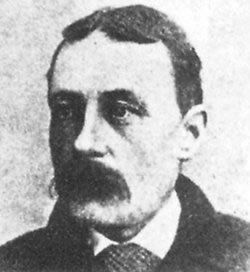List
30 Canadian War Heroes
To celebrate its 30th anniversary, The Canadian Encyclopedia created 30 lists of 30 things that have helped define our identity, from famous people and historic events, to iconic foods and influential artists.

Enter your search term
Signing up enhances your TCE experience with the ability to save items to your personal reading list, and access the interactive map.
Create AccountList
To celebrate its 30th anniversary, The Canadian Encyclopedia created 30 lists of 30 things that have helped define our identity, from famous people and historic events, to iconic foods and influential artists.
"https://d3d0lqu00lnqvz.cloudfront.net/media/media/a7c708ef-3e7b-4890-a1ad-f637397985a6.jpg" // resources/views/front/categories/view.blade.phphttps://d3d0lqu00lnqvz.cloudfront.net/media/media/a7c708ef-3e7b-4890-a1ad-f637397985a6.jpg

Article
In the first decade of the 19th century, relations between Great Britain and the United States deteriorated, primarily due to the widening influence of the Napoleonic Wars. At the centre of this movement, two Shawnee brothers implored Indigenous peoples to unite in order to defend their dwindling lands against the growing incursions of Anglo-American settlers and the United States government. The promise of an Indigenous state never came to fruition. After the War of 1812, the United States and Britain found it more advantageous to ignore Aboriginal title.
"https://d3d0lqu00lnqvz.cloudfront.net/media/media/643cf6b2-b555-4624-bac0-8717cf614cf6.jpg" // resources/views/front/categories/view.blade.phphttps://d3d0lqu00lnqvz.cloudfront.net/media/media/643cf6b2-b555-4624-bac0-8717cf614cf6.jpg

Article
Acheson Gosford Irvine, soldier, police officer, prison warden (b at Québec C 7 Dec 1837; d there 9 Jan 1916). The third commissioner of the NWMP, Irvine's reputation was ruined by the North-West Resistance.
"https://d3d0lqu00lnqvz.cloudfront.net/A_G_Irvine.png" // resources/views/front/categories/view.blade.phphttps://d3d0lqu00lnqvz.cloudfront.net/A_G_Irvine.png

Article
Adam Dollard des Ormeaux, soldier, French colonist (born 23 July 1635 in France; died in May 1660 near Carillon, in New France). Adam Dollard des Ormeaux was the garrison commander in Ville-Marie. He led a group of French fighters and their Algonquin and Huron-Wendat allies against the Haudenosaunee (Iroquois) at the battle of Long Sault. Adam Dollard des Ormeaux has long been considered both a hero and a martyr who sacrified himself in the defence of Ville-Marie. Recent studies, however, have cast doubt on how heroic his conduct actually was.
"https://d3d0lqu00lnqvz.cloudfront.net/media/media/60dc039b-9edc-435b-b898-2d1f6a5e9f51.JPG" // resources/views/front/categories/view.blade.phphttps://d3d0lqu00lnqvz.cloudfront.net/media/media/60dc039b-9edc-435b-b898-2d1f6a5e9f51.JPG

Article
Alexander Roberts Dunn, VC, army officer (born 15 September 1833 in York, Upper Canada; died 25 January 1868 near Senafe, Abyssinia). During the Crimean War, Lieutenant Dunn was the first Canadian ever to be awarded the Victoria Cross (VC), the highest award for bravery among troops of the British Empire.
"https://d3d0lqu00lnqvz.cloudfront.net/media/media/c8d6753b-5937-4ffa-af23-3032ae057629.jpg" // resources/views/front/categories/view.blade.phphttps://d3d0lqu00lnqvz.cloudfront.net/media/media/c8d6753b-5937-4ffa-af23-3032ae057629.jpg

Article
André Nault, Métis leader, farmer, and buffalo hunter (born 20 April 1830 in Point Douglas, Red River Colony [now Winnipeg, MB]; died 17 December 1924 in St Vital, MB). Although a kinsman of Louis Riel and always considered a Métis, Nault was not of mixed blood (his mother and father were French Canadian).
"https://www.thecanadianencyclopedia.ca/images/tce_placeholder.jpg?v=e9dca980c9bdb3aa11e832e7ea94f5d9" // resources/views/front/categories/view.blade.phphttps://www.thecanadianencyclopedia.ca/images/tce_placeholder.jpg?v=e9dca980c9bdb3aa11e832e7ea94f5d9

Article
Andrew Hamilton Gault, army officer (born in England 18 August 1882; died at Montréal 28 November 1958). Of Canadian parents, he attended McGill University. Commissioned in the 2nd Canadian Mounted Rifles, he served in the South African War and joined the Canadian Militia on return to Canada.
"https://www.thecanadianencyclopedia.ca/images/tce_placeholder.jpg?v=e9dca980c9bdb3aa11e832e7ea94f5d9" // resources/views/front/categories/view.blade.phphttps://www.thecanadianencyclopedia.ca/images/tce_placeholder.jpg?v=e9dca980c9bdb3aa11e832e7ea94f5d9

Article
Born in the backwoods of the Carolinas, Jackson was the son of Scottish Irish colonists. At the young age of 13, Jackson served in a local militia as a courier during the American Revolution. It was a dangerous job.
"https://d3d0lqu00lnqvz.cloudfront.net/media/media/1fb75c31-eec6-4962-a77e-13cd5d4f5c9d.jpg" // resources/views/front/categories/view.blade.phphttps://d3d0lqu00lnqvz.cloudfront.net/media/media/1fb75c31-eec6-4962-a77e-13cd5d4f5c9d.jpg

Article
Andrew Charles Mynarski, Royal Canadian Air Force pilot officer, Victoria Cross recipient (born 14 October 1916 in Winnipeg, MB; died 13 June 1944 in Cambrai, France). Mynarksi served as a gunner on bomber aircraft during the Second World War. While on a mission on 12 June 1944, his plane was attacked and on fire when, rather than jumping to safety, he ran through flames to try to rescue his fellow crewmember who was trapped in the rear gun turret. Unable to extricate his friend, Mynarski parachuted safely to the ground but later died due to severe burns. His bravery earned him many posthumous commendations, including the Victoria Cross.
"https://d3d0lqu00lnqvz.cloudfront.net/media/media/186f9410-2e14-46b5-bf86-e6b04c11dd86.jpg" // resources/views/front/categories/view.blade.phphttps://d3d0lqu00lnqvz.cloudfront.net/media/media/186f9410-2e14-46b5-bf86-e6b04c11dd86.jpg

Article
Ange Duquesne de Menneville Duquesne, Marquis, naval officer, governor general of New France 1752-55 (b at Toulon, France c 1700; d at Antony, France 17 Sept 1778). He joined the navy as a boy and saw action in the War of the Austrian Succession.
"https://www.thecanadianencyclopedia.ca/images/tce_placeholder.jpg?v=e9dca980c9bdb3aa11e832e7ea94f5d9" // resources/views/front/categories/view.blade.phphttps://www.thecanadianencyclopedia.ca/images/tce_placeholder.jpg?v=e9dca980c9bdb3aa11e832e7ea94f5d9

Article
Arthur Brooke, career soldier (b at Ireland 1772; d at London 1843). Colonel Arthur Brooke is best remembered as one of the two key British commanders during the Battle of North Point (part of the Battle of Baltimore) in the War of 1812.
"https://www.thecanadianencyclopedia.ca/images/tce_placeholder.jpg?v=e9dca980c9bdb3aa11e832e7ea94f5d9" // resources/views/front/categories/view.blade.phphttps://www.thecanadianencyclopedia.ca/images/tce_placeholder.jpg?v=e9dca980c9bdb3aa11e832e7ea94f5d9

Article
Arthur Herbert Lindsay “Tappy” Richardson, VC, policeman, soldier, war hero, labourer (born 23 September 1872 in Southport, England; died 15 December 1932 in Liverpool, England). Richardson served in the North-West Mounted Police from 1894 to 1907 but took leave in 1900 to fight in the South African War. He was the first member of a Canadian unit to receive the Victoria Cross.
"https://d3d0lqu00lnqvz.cloudfront.net/BoerWar/arthur-richardson.png" // resources/views/front/categories/view.blade.phphttps://d3d0lqu00lnqvz.cloudfront.net/BoerWar/arthur-richardson.png

Article
Arthur Roy Brown, fighter pilot and ace, businessman, civil aviation pioneer (born 23 December 1893 in Carleton Place, Ontario; died 9 March 1944 in Stouffville, Ontario). Brown is credited with killing Germany’s top First World War ace, Manfred von Richthofen, the famed “Red Baron.” Richthofen may, however, have been shot down by two Australian army machine-gunners.
"https://d3d0lqu00lnqvz.cloudfront.net/media/media/dd4b0848-4236-4de3-9d3a-faff42f2bcd4.jpg" // resources/views/front/categories/view.blade.phphttps://d3d0lqu00lnqvz.cloudfront.net/media/media/dd4b0848-4236-4de3-9d3a-faff42f2bcd4.jpg

Article
As part of the campaign to invade Canada led by Richard Montgomery, Arnold led an expedition along the Kennebec, Dead and Chaudière rivers, arriving before Québec with only 700 of his original troop of 1100 men.
"https://d3d0lqu00lnqvz.cloudfront.net/media/media/6439cd69-8c40-4285-8ee3-fb7b7c9fa521.jpg" // resources/views/front/categories/view.blade.phphttps://d3d0lqu00lnqvz.cloudfront.net/media/media/6439cd69-8c40-4285-8ee3-fb7b7c9fa521.jpg

Article
Campbell Mellis Douglas, surgeon, soldier, writer, inventor and sportsman (b at Grosse Ile, Qué 5 Aug 1840; d at Wells, Somerset, Eng 31 Dec 1909).
"https://d3d0lqu00lnqvz.cloudfront.net/Campbell_Douglas_VC.jpg" // resources/views/front/categories/view.blade.phphttps://d3d0lqu00lnqvz.cloudfront.net/Campbell_Douglas_VC.jpg
